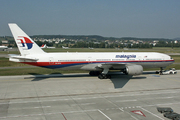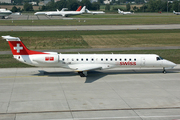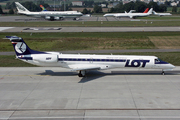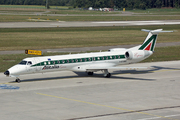Dépêches
NASA and the NNSA to Evaluate Advanced InfiniBand Software from Obsidian Strategics - Codename: BGFC
Dépèche transmise le 20 juin 2011 par Business Wire

NASA and the NNSA to Evaluate Advanced InfiniBand Software from Obsidian Strategics - Codename: BGFC
RESTON, Va.--(BUSINESS WIRE)--Obsidian, the leader in InfiniBandTM range-extension, routing and encryption technologies, is pleased to announce a collaboration with the NASA Advanced Supercomputing (NAS) Division at NASA's Ames Research Center, Moffett Field, Calif., and the Hyperion Project at the Department of Energy's Lawrence Livermore National Laboratory (LLNL) to assess new software engineered for networks with multiple subnets in complex topologies.
“We are at the practical limit of those modifications and require a more sophisticated approach not only for routing, but in managing single subnets. It's a hard problem that needs more work. We look forward to collaborating with our partners in this area.”
Obsidian's Chief Visionary Officer, Dr. David Southwell, explains the motivation behind this program: “Today's fastest supercomputers are assembled from many thousands of servers coupled with high-performance InfiniBand interconnect. These systems have been confined to a single subnet architecture – by removing this restriction next-generation systems can expand as required.”
“Multiple subnet architectures provide better scaling, faster initialization, fault isolation and, very importantly - the ability to support very large scale distributed heterogeneous infrastructure. The 'Subnet Manager' – the software responsible for pre-calculating traffic paths within a subnet, – is currently limited to dealing with simple, regular topologies (such as Clos networks or hypercubes). By enabling multiple subnets, BGFC allows larger systems to be constructed by joining subnets using different topologies together into a single system. “For example a multi-subnet supercomputer, storage arrays, visualization systems and many smaller clusters could be combined into a single, optimally routed complex fabric, spanning a campus or even a Wide Area Network,” continued David.
“Without routing, we are limited in how we build and reliably operate large-scale InfiniBand based networks. I designed a simple way to merge the Pleiades supercomputer’s 11-D hypercube with two 2-D tori onto a single subnet, but it required changes to the subnet manager and quite a bit of effort to set up correctly to work around the issue,” said Bob Ciotti, systems lead and chief system architect in the NAS Division at Ames. “We are at the practical limit of those modifications and require a more sophisticated approach not only for routing, but in managing single subnets. It's a hard problem that needs more work. We look forward to collaborating with our partners in this area."
Pleiades achieved 1.09 petaflop/s with a ranking of 7th on the June Top500 list and is the world's largest InfiniBand network with 63 miles of cables and 80,890 active ports, all programmed and controlled by the OpenSM subnet manager.
Matt Leininger, manager of the Hyperion Cluster at LLNL, shares the sentiment - “The supercomputing program at LLNL is very interested in utilizing large-scale multi-subnet InfiniBand environments in our data centers, and we are especially excited about the possibilities Obsidian is bringing forward to the open-source community with BGFC”.
The Hyperion project brings together LLNL and 10 industry leaders to accelerate the development of next-generation Linux clusters. Initiated by DOE’s National Nuclear Security Administration (NNSA), Hyperion serves as a testbed for HPC technologies critical to Livermore’s national security missions and industry’s ability to make petaFLOP/s computing and storage available to U.S. industry.
A public demonstration of BGFC is planned for the Supercomputing 2011 conference in Seattle this November.
About Obsidian Strategics
Obsidian Strategics™ is the developer of Longbow™, a series of InfiniBand products featuring range extension, routing and encryption. Longbow technology allows an InfiniBand fabric, normally a short-range network used in high-performance computing, to be extended via optical fiber over varying distances. Longbow connects across Campus, Metro or Global networks to enable unparalleled real-time backup over long-distance, high-bandwidth video transmission and efficient movement of large data sets to compute and storage resources. www.obsidianstrategics.com.
About NAS
The NASA Advanced Supercomputing (NAS) Division supports all of NASA's key mission areas with high-performance computing, modeling and simulation, and visualization capabilities.
For information about NAS, visit:
For information about NASA programs, visit:
About LLNL
LLNL is a National Nuclear Security Administration science and technology laboratory, with a primary responsibility to ensure the safety and reliability of the nation’s nuclear deterrent. Teams of scientists and engineers also apply basic science to address national and global security challenges from preventing the proliferation of weapons of mass destruction to energy, environment and climate change. High performance computing is central to all research programs and the Laboratory is home to some of the world’s fastest supercomputers.
- 24/04Ibis Styles London Heathrow : l'hôtel géré par un passionné d'aviation pour les passionnés d'aviation (photos + vidéos)
- 23/04 SkyUp renouvelle son partenariat avec Wizz Air
- 23/04 Play : résultats de mars 2024
- 23/04 Les garde-côtes japonais commande trois Airbus H225 supplémentaires
- 23/04 Vueling et Make-A-Wish France signent un partenariat
- 23/04 TUI annonce ses destinations au départ de Deauville pour l'été 2024.
- 23/04 Twin Jet renforce son programme de vols sur la ligne Toulouse/Rennes
- 23/04 Norse Atlantic Airways : résultats du mois de mars 2024
- 23/04 Volotea renforce son offre entre Lille et le Maroc
- 22/04 Finnair a dévoilé son programme de vol pour les saisons hiver 2024 et été 2025
- 22/04 Qatar Airways annonce le lancement de vols à destination de Kinshasa
- 22/04 Vietnam Airlines et CAE prolongent leur accord
- 22/04 Mermoz Academy de Tours commande des Tecnam P-Mentor
- 22/04 Transavia France reçoit son 2e Airbus A320neo
- 20/04 Friedrichshafen 2024 : Blackwing présente un nouveau modèle de son BW650RG
- 20/04 Friedrichshafen 2024 : JMB Aircraft présente son Phoenix
- 19/04 Friedrichshafen 2024 : le projet "Fly To The North"
- 19/04 Friedrichshafen 2024 : Aura Aero présente pour la première fois ses trois appareils
- 19/04 Friedrichshafen 2024 : Duc Hélices présente son hélice Tiger-3
- 19/04 Friedrichshafen 2024 : Splash-in Aviation expose son Pétrel X







